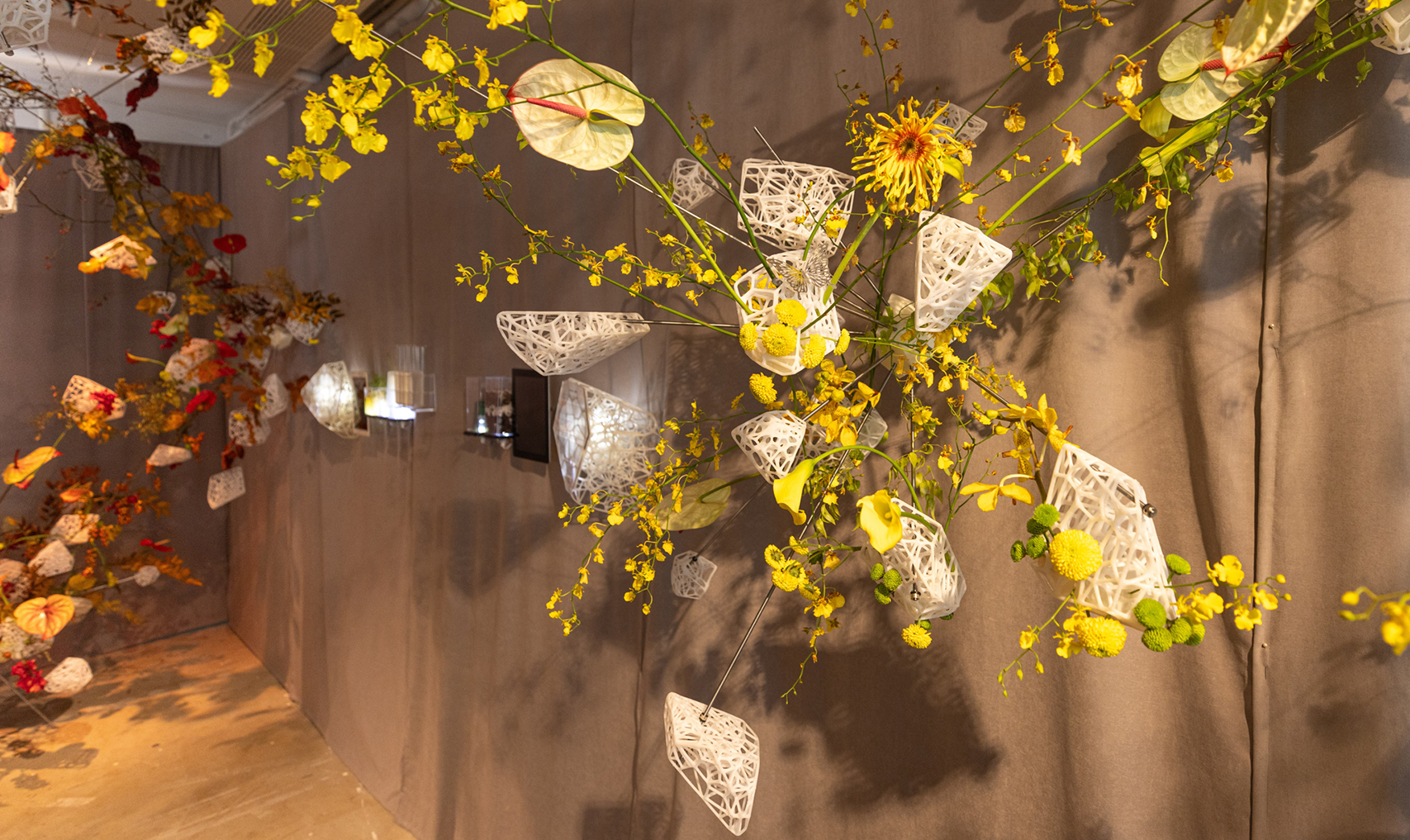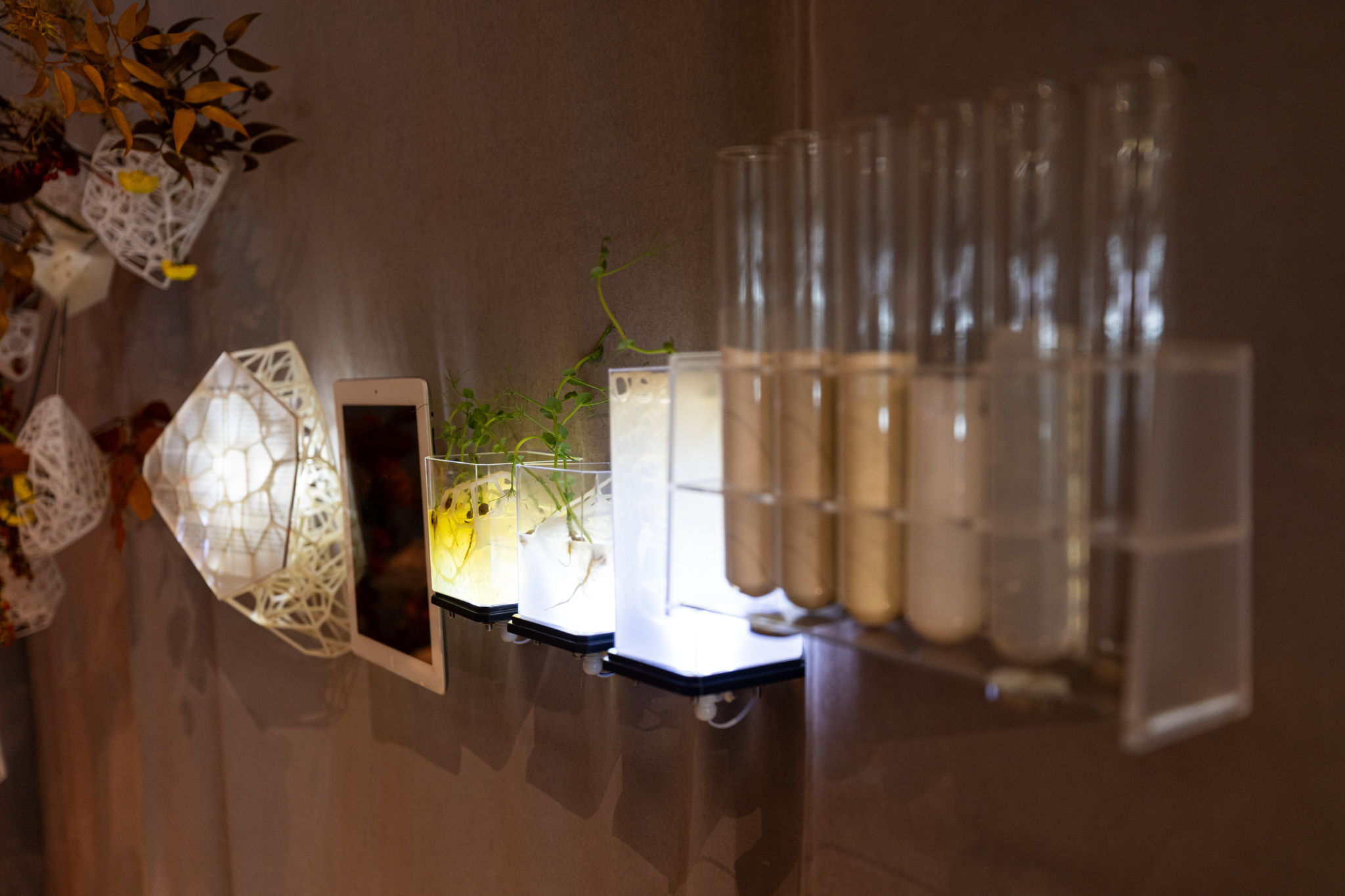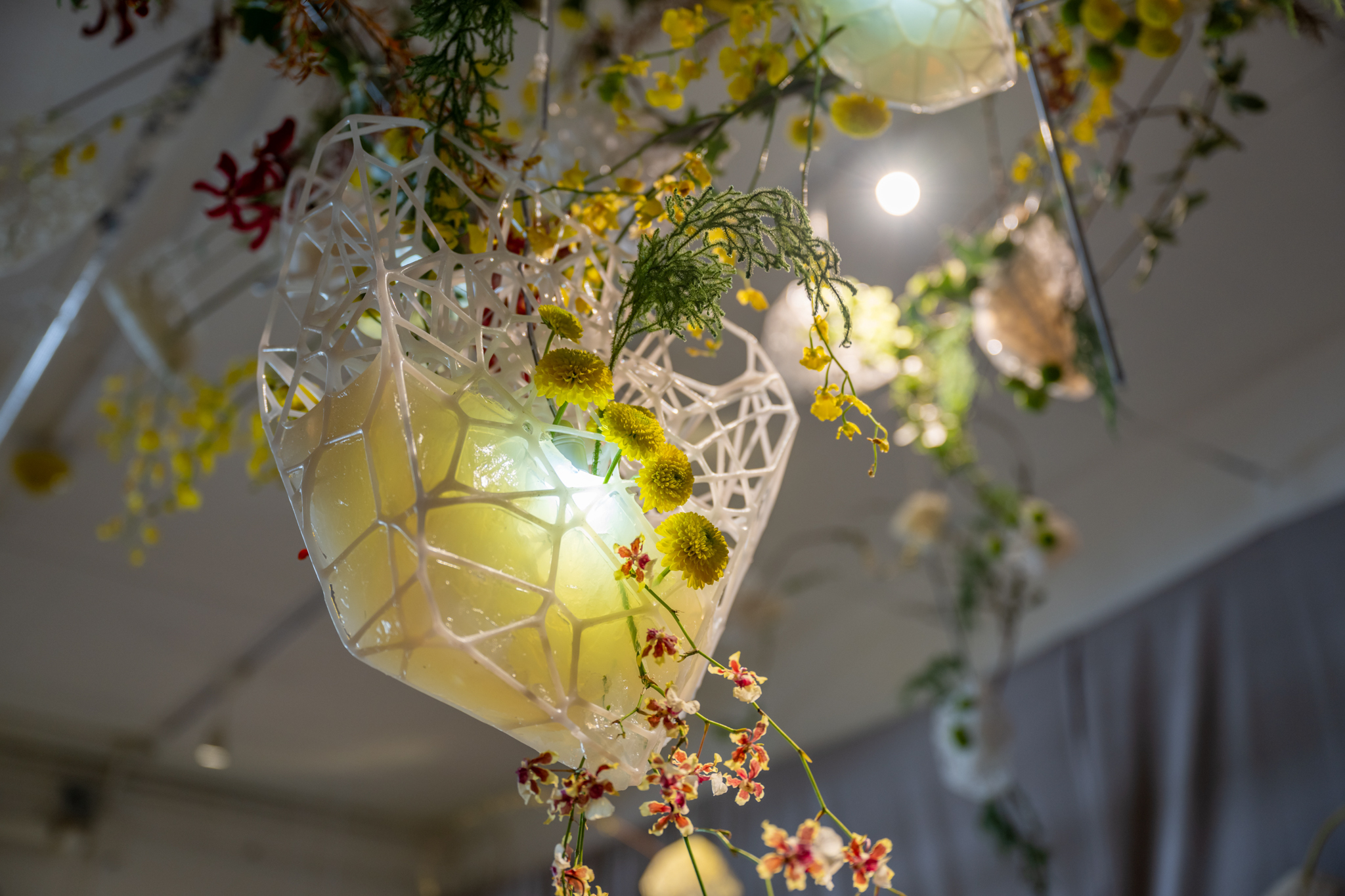
“Future Soil” explores the relationship between emerging technologies in computation and floral craft making. It proposes a method that leverages digital fabrication to design bio-receptive structures integrated with plant species.
Traditionally, floral designs utilise metal or branches as structural frames before incorporating multiple layers of materials to support plant growth. This method has limitations regarding precision control of the geometry and plants at steep angles. Intending to create a lightweight structural system that supports plant growth simultaneously, our design progress starts by creating a tailored nutrient mixture embedded in a digitally fabricated sculpture. These structures are carefully designed to simulate soil conditions and cater to the plants’ growing needs with varying porosity to control breathability and water holding capacity. The changing density across the surface provides different structural strengths, allowing the plant roots to grip onto the structure. Over time, the 3D-printed elements will grow, evolve and respond to the environment, turning the sculpture into a living, breathing organism.
“Future Soil” showcases the potential for lifeforms to influence computational design. The project provides a new perspective on the interplay between nature and the man-made world, prompting us to reimagine how to reshape our built environment.



